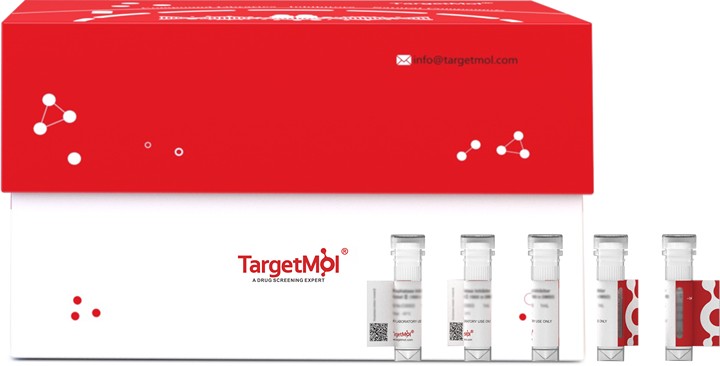- Remove All
 Your shopping cart is currently empty
Your shopping cart is currently empty
Human metapneumovirus (strain CAN97-83) Fusion glycoprotein F0 (His & SUMO)
Inactive precursor that is cleaved to give rise to the mature F1 and F2 fusion glycoproteins.; Class I viral fusion protein. Under the current model, the protein has at least 3 conformational states: pre-fusion native state, pre-hairpin intermediate state, and post-fusion hairpin state. During viral and plasma cell membrane fusion, the coiled coil regions assume a trimer-of-hairpins structure, positioning the fusion peptide in close proximity to the C-terminal region of the ectodomain. The formation of this structure appears to drive apposition and subsequent fusion of viral and cellular membranes leading to delivery of the nucleocapsid into the cytoplasm. This fusion is pH independent and occurs at the plasma or endosomal membrane. The trimer of F1-F2 (F protein) also facilitates the attachment to host cell by binding to host heparan sulfate.; Major determinant of the species specificity of RSV infection. The trimer of F1-F2 (F protein) also facilitates the attachment to host cell by binding to host heparan sulfate.

Human metapneumovirus (strain CAN97-83) Fusion glycoprotein F0 (His & SUMO)
| Pack Size | Price | Availability | Quantity |
|---|---|---|---|
| 20 μg | $360 | 20 days | |
| 100 μg | $745 | 20 days | |
| 1 mg | $2,530 | 20 days |
Product Information
| Biological Activity | Activity has not been tested. It is theoretically active, but we cannot guarantee it. If you require protein activity, we recommend choosing the eukaryotic expression version first. |
| Description | Inactive precursor that is cleaved to give rise to the mature F1 and F2 fusion glycoproteins.; Class I viral fusion protein. Under the current model, the protein has at least 3 conformational states: pre-fusion native state, pre-hairpin intermediate state, and post-fusion hairpin state. During viral and plasma cell membrane fusion, the coiled coil regions assume a trimer-of-hairpins structure, positioning the fusion peptide in close proximity to the C-terminal region of the ectodomain. The formation of this structure appears to drive apposition and subsequent fusion of viral and cellular membranes leading to delivery of the nucleocapsid into the cytoplasm. This fusion is pH independent and occurs at the plasma or endosomal membrane. The trimer of F1-F2 (F protein) also facilitates the attachment to host cell by binding to host heparan sulfate.; Major determinant of the species specificity of RSV infection. The trimer of F1-F2 (F protein) also facilitates the attachment to host cell by binding to host heparan sulfate. |
| Species | HMPV |
| Expression System | E. coli |
| Tag | N-6xHis-SUMO |
| Accession Number | Q6WB98 |
| Amino Acid | KESYLEESCSTITEGYLSVLRTGWYTNVFTLEVGDVENLTCSDGPSLIKTELDLTKSALRELKTVSADQLAREEQIENPRQSR |
| Construction | 20-102 aa |
| Protein Purity | > 90% as determined by SDS-PAGE. |
| Molecular Weight | 22.3 kDa (predicted) |
| Endotoxin | < 1.0 EU/μg of the protein as determined by the LAL method. |
| Formulation | If the delivery form is liquid, the default storage buffer is Tris/PBS-based buffer, 5%-50% glycerol. If the delivery form is lyophilized powder, the buffer before lyophilization is Tris/PBS-based buffer, 6% Trehalose, pH 8.0. |
| Reconstitution | Reconstitute the lyophilized protein in sterile deionized water. The product concentration should not be less than 100 μg/mL. Before opening, centrifuge the tube to collect powder at the bottom. After adding the reconstitution buffer, avoid vortexing or pipetting for mixing. |
| Stability & Storage | Lyophilized powders can be stably stored for over 12 months, while liquid products can be stored for 6-12 months at -80°C. For reconstituted protein solutions, the solution can be stored at -20°C to -80°C for at least 3 months. Please avoid multiple freeze-thaw cycles and store products in aliquots. |
| Shipping | In general, Lyophilized powders are shipping with blue ice. Solutions are shipping with dry ice. |
| Research Background | Inactive precursor that is cleaved to give rise to the mature F1 and F2 fusion glycoproteins.; Class I viral fusion protein. Under the current model, the protein has at least 3 conformational states: pre-fusion native state, pre-hairpin intermediate state, and post-fusion hairpin state. During viral and plasma cell membrane fusion, the coiled coil regions assume a trimer-of-hairpins structure, positioning the fusion peptide in close proximity to the C-terminal region of the ectodomain. The formation of this structure appears to drive apposition and subsequent fusion of viral and cellular membranes leading to delivery of the nucleocapsid into the cytoplasm. This fusion is pH independent and occurs at the plasma or endosomal membrane. The trimer of F1-F2 (F protein) also facilitates the attachment to host cell by binding to host heparan sulfate.; Major determinant of the species specificity of RSV infection. The trimer of F1-F2 (F protein) also facilitates the attachment to host cell by binding to host heparan sulfate. |
Dose Conversion
Calculator
Tech Support

Copyright © 2015-2025 TargetMol Chemicals Inc. All Rights Reserved.


